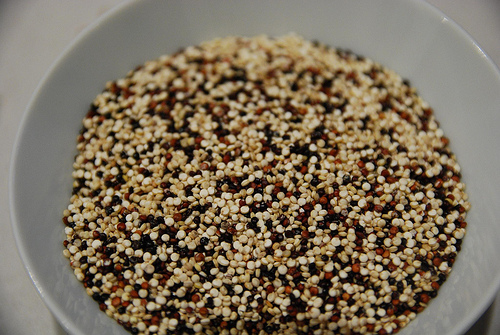By Griffy Vigneron (Contributor) – Email
Print Edition: February 27, 2013
A buzz on the web lately places the blame on vegans for hunger in the Andes.
The source of the controversy? The globally-caused, high-rising prices of Quinoa (pronounced keen-wa).
Quinoa, a tasty, nutrient-rich, protein-rich, and gluten-free alternative to rice and grain, is skyrocketing in popularity. Even NASA has recognized its potential, listing it as a potential food for their Controlled Ecological Life Support System for long-duration human-occupied spaceflights
But as popularity rises, demand also increases. The Andeans, with limited space to grow the grain, are having trouble meeting that demand – and their staple cultural food is quickly becoming unaffordable to them as farmers try to keep up.
Lenore Newman, Canada Research Chair in food security and environment at UFV, believes there is a solution. She suggests Canada’s own prairie regions as the perfect, spacious region for growing quinoa.
“We don’t have to take all the Andeans’ quinoa,” she stated.
Quinoa is a tough and hardy plant, right at home in cold dry environments. And unlike grain, which hogs water resources, quinoa requires much less hydration.
Newman thinks that if the prairies were to begin growing quinoa, world demand could easily be met and prices would become reasonable again.
Newman explains that this would make it so Andeans wouldn’t end up exporting all their native crops. The problem with mass exportation of quinoa is that it causes imported foods to become cheaper than Andean-grown grain; what we’re starting to see now is a few Quinoan farmers becoming rich, while Andean workers become poor.
Newman recently wrote an article on the subject for The Globe and Mail, in which she was sure to point out that rescuing the Andean economy with Canadian-grown quinoa will be unlikely to happen without government support and further research; while Quinoa is a resilient plant, it needs to be more productive in order to be a feasible option for large-scale farming.
Unfortunately, Newman says, this doesn’t seem to be the way the government is heading.
“The government has been cutting funding to agriculture,” she says. “It’s not sexy.”
More money is being focused in more urban areas, Newman explains. Small universities, which often carry on important agricultural research, are facing funding cuts.
Newman encourages students to contact their MLAs with positive messages about the work their school is doing to raise awareness. Awareness of a good job is more likely to lead to funding, in her opinion, than protests.


